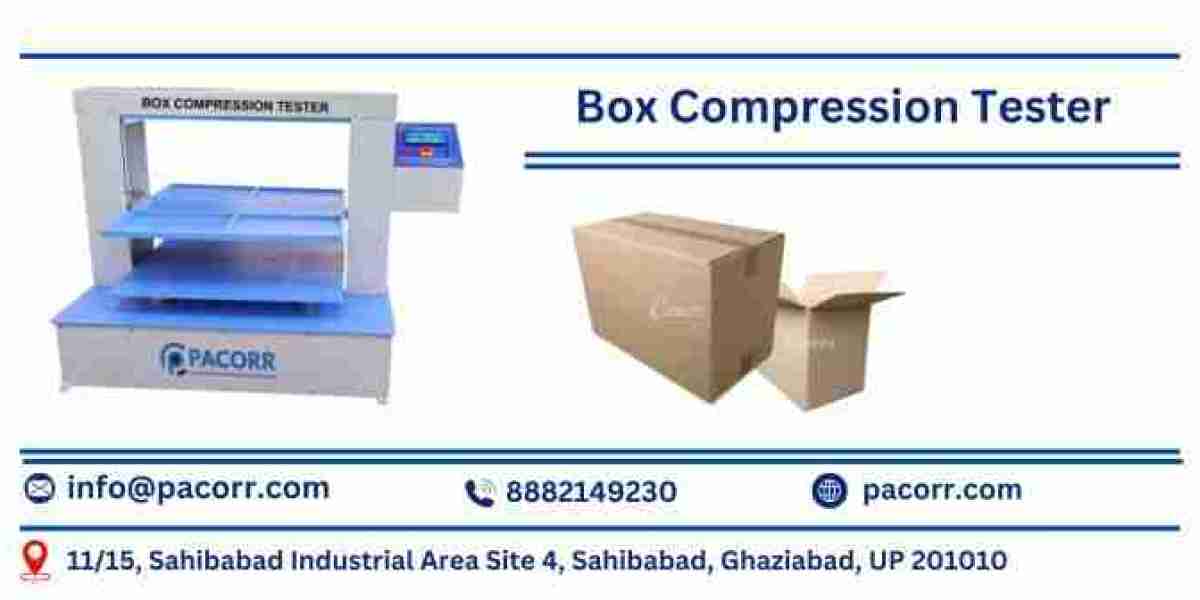The Importance of Box Compression Testing
Packaging plays a critical role in the supply chain, safeguarding products from damage during transit and storage. Box Compression Tester is a fundamental aspect of packaging quality control. This process assesses the compressive strength of boxes, ensuring they can withstand the pressures they will face in real-world scenarios. Here's why it's crucial:
· Product Protection: Strong packaging prevents product damage, reducing returns and enhancing customer satisfaction.
· Cost Efficiency: Optimizing box strength can minimize material usage, reducing costs without compromising safety.
· Regulatory Compliance: Many industries have stringent packaging standards. Box compression testing helps meet these requirements.
· Brand Reputation: Durable packaging reflects a commitment to quality, boosting brand reputation and customer trust.
Understanding the Box Compression Tester
A Box Compression Tester is a sophisticated device designed to measure the compressive strength of packaging materials. It applies a controlled force to a box until it deforms or fails, providing valuable data on its performance. Here are the key components and functions of a Box Compression Testing:
Key Components
· Load Cell: Measures the force applied to the box with high precision.
· Platen: The flat surfaces that press against the box during testing.
· Control System: Allows the operator to set parameters such as force and speed.
· Data Acquisition System: Records test results for analysis.
How It Works
1. Setup: The box is placed between the platens, and test parameters are set.
2. Compression: The platens move towards each other, applying a uniform force to the box.
3. Measurement: The load cell measures the force, and the data acquisition system records the compression force at various stages.
4. Analysis: The results indicate the box's compressive strength and performance under stress.
Benefits of Using a Box Compression Tester
Integrating a Box Compression Tester into your packaging process offers numerous advantages:
1. Accurate Strength Assessment
By precisely measuring the compressive strength, you can determine the maximum load a box can endure without failing. This ensures that your packaging meets required standards and provides adequate protection.
2. Optimized Material Usage
Understanding the strength characteristics of your packaging materials allows you to optimize material usage. This can lead to significant cost savings by reducing excess material without compromising the integrity of the packaging.
3. Enhanced Quality Control
A Box Compression Testing helps maintain consistent quality across production batches. By regularly testing samples, you can identify and address any variations in material or manufacturing processes.
4. Improved Product Safety
Ensuring that your packaging can withstand real-world conditions minimizes the risk of product damage. This not only protects your products but also enhances customer satisfaction by delivering intact goods.
5. Regulatory Compliance
Many industries have specific packaging standards that must be met. Box compression testing ensures compliance with these regulations, avoiding potential legal issues and fines.
6. Better Supply Chain Management
Strong packaging reduces the likelihood of damage during transit, streamlining your supply chain. Fewer damaged products mean fewer delays and lower logistics costs.
Choosing the Right Box Compression Tester
Selecting the appropriate Box Compression Tester for your needs involves considering several factors:
Test Range
Ensure the tester can accommodate the size and weight range of your packaging materials. This is crucial for obtaining accurate results.
Precision and Accuracy
Look for a tester with a high-precision load cell and accurate data acquisition system. This ensures reliable and repeatable results.
Ease of Use
A user-friendly control system simplifies the testing process, reducing the likelihood of operator errors and enhancing efficiency.
Data Management
Advanced testers offer robust data management features, allowing you to store, analyse, and export test results easily. This is valuable for quality control and compliance documentation.
Durability and Maintenance
Invest in a durable tester that can withstand frequent use. Additionally, consider the availability of maintenance and support services to keep the device in optimal condition.
Implementing Box Compression Testing in Your Process
Integrating box compression testing into your packaging process involves several steps:
1. Establish Testing Protocols
Define the testing protocols, including the frequency of tests, sample sizes, and acceptable strength thresholds. This ensures consistent and meaningful results.
2. Train Operators
Proper training for operators is essential to ensure accurate and consistent testing. They should understand the testing process, equipment operation, and data interpretation.
3. Analyse Results
Regularly analyse the test results to identify trends and areas for improvement. Use this data to optimize packaging materials and manufacturing processes.
4. Continuous Improvement
Box compression testing should be part of a continuous improvement strategy. Regularly review and update testing protocols to align with evolving industry standards and technological advancements.
Conclusion
In the competitive world of packaging, ensuring the strength and durability of your boxes is crucial. The Box Compression Tester is an invaluable tool that provides precise measurements of compressive strength, helping you optimize packaging materials, enhance quality control, and improve overall efficiency. By integrating box compression testing into your process, you can safeguard your products, reduce costs, and maintain a reputation for quality and reliability.
(FAQ) About Box Compression Testers
1. What is a Box Compression Tester?
A Box Strength Tester measures the compressive strength of packaging materials, ensuring they can withstand the pressures of transit and storage.
2. Why is box compression testing important?
It ensures product protection, optimizes material usage, meets regulatory standards, and enhances customer satisfaction by preventing damage during transit.
3. How does a Box Compression Tester work?
It applies a controlled force to a box until it deforms or fails, measuring the compressive strength and performance under stress.
4. What are the key components?
Load Cell: Measures force.
Platens: Press against the box.
Control System: Sets test parameters.
Data Acquisition System: Records results.
5. How can box compression testing improve packaging efficiency?
Box Compression Tester Price improves packaging efficiency by:
Accurately assessing box strength.
Optimizing material usage.
Enhancing quality control.
Improving product safety.
Ensuring regulatory compliance.
Streamlining supply chain management.
6. Can testing reduce packaging costs?
Yes, by optimizing material usage and minimizing excess material without compromising safety.
7. Are Box Compression Testers suitable for all types of boxes?
Generally, yes, but ensure the tester accommodates your specific box dimensions and weight.
8. How do I maintain a Box Compression Tester?
Regularly calibrate, clean the platens, follow maintenance guidelines, and schedule professional checks.
9. Where can I purchase a reliable Box Compression Tester?
At pacorr.com, offering high-quality testers designed for modern packaging needs. Contact us for more details.
If you have more questions, visit us at pacorr.com. We're here to help you optimize your packaging processes.








